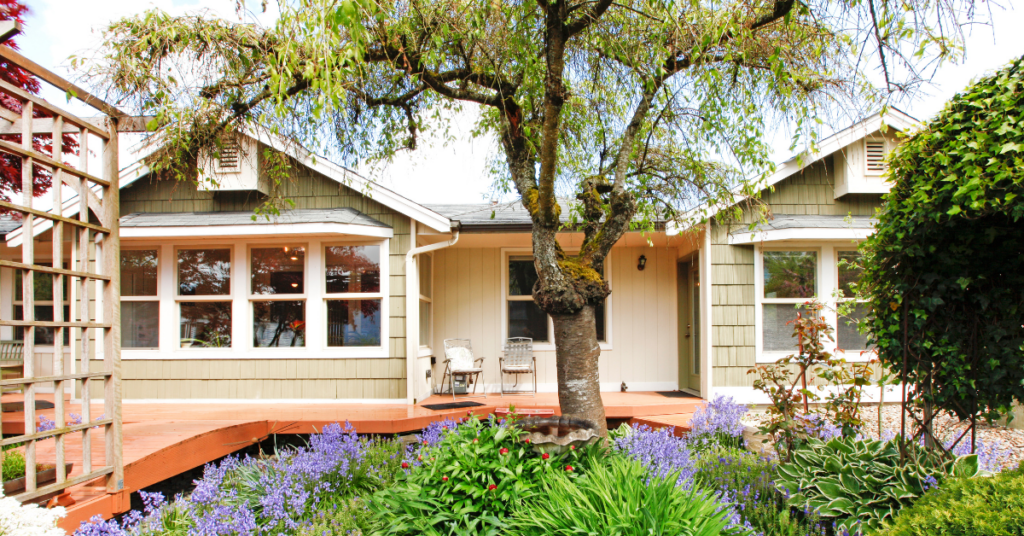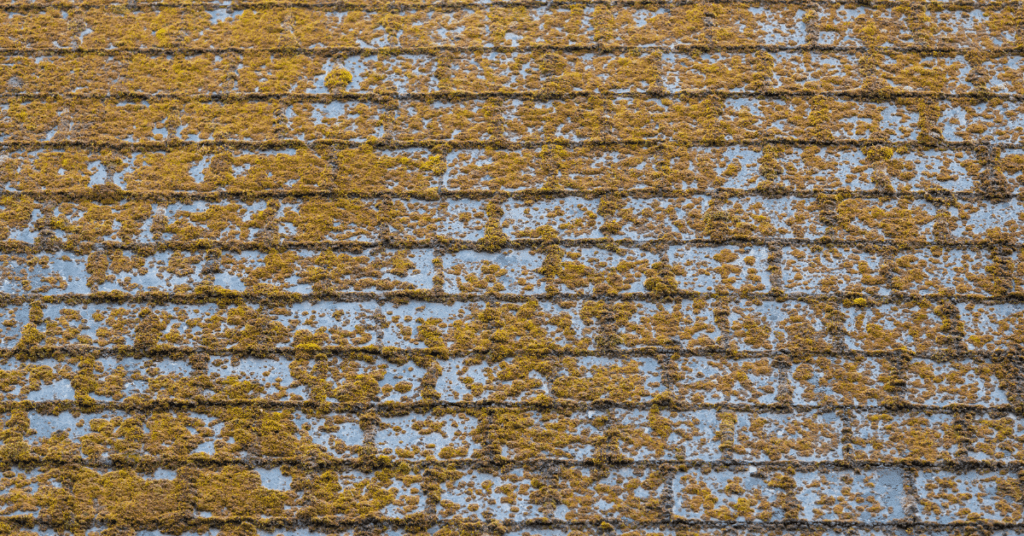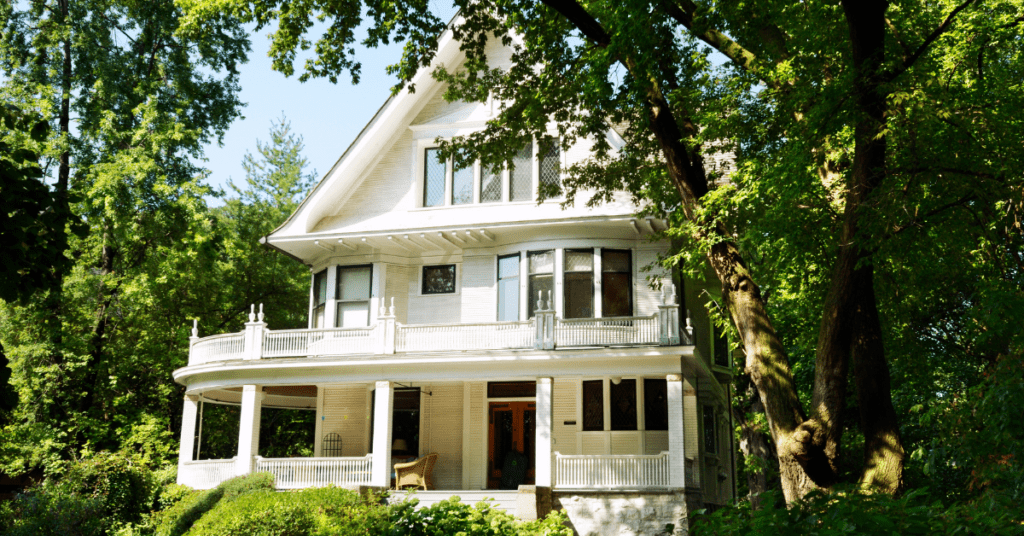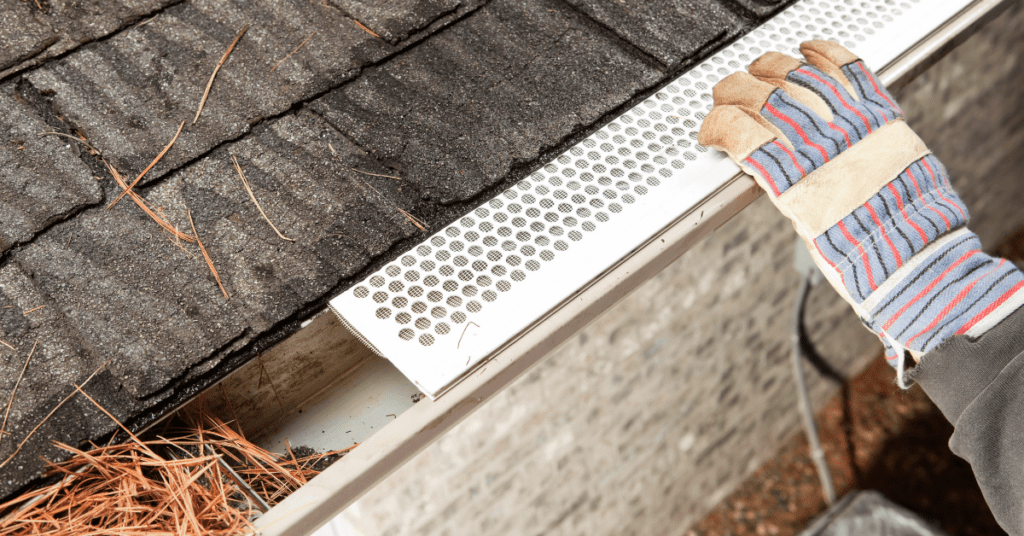The Impact of Trees and Foliage on Your Roof


As homeowners, we often focus on the interior aspects of our homes, such as decorating and maintaining the rooms. However, it is crucial not to overlook the impact of exterior elements, particularly trees and foliage, on our roofs.
In this article, we will explore the various ways in which trees and foliage can cause damage to your roof and discuss preventive measures and repairs that can help protect your roof from such damage.
What type of damage can trees and foliage cause to the roof?
When it comes to the impact of trees and foliage on your roof, there are several potential damages to be aware of. Damage can occur to asphalt shingle roofs when the external granules are shed, making the Asphalt shingle roofs can become vulnerable to UV light damage, which is a problem related to excessive temperatures impacting your roof’s lifespan. As for metal roofs, they can suffer from corrosion when the outer layer is scraped off by pointed branches, thereby exposing the raw metal underneath. On flat roofs, tree branches can cause tears on the single-ply layer, which can expose the underlying layers to moisture infiltration. Over time, this can lead to water damage and compromise the structural integrity of your roof. Additionally, leaves and needles from trees can accumulate in your gutters, clogging them and preventing proper drainage. This can result in overflowing rainwater and subsequent moisture infiltration.
What are the signs to detect any potential damage to the roof and how often is inspection needed?
Being proactive in identifying potential roof damage caused by trees and foliage is crucial. Here are some common signs to look out for:
1. Missing or broken shingles
Inspect your roof for any noticeable gaps or damaged shingles, as they can leave your roof vulnerable to water infiltration.
2. Dark spots or streaks on the roof
These can indicate the presence of mold or algae, which can compromise your roof’s integrity if left untreated.
3. Water stains on ceilings or walls
If you notice water stains indoors, it could be a sign of a roof leak caused by tree-related damage, or it might be related to other issues such as hail damage.
4. Excessive amounts of moss or algae on the roof
These organisms can retain moisture and cause damage to your roof over time. Regular cleaning and maintenance can help prevent their growth.
5. Leaks in the attic, around vents, chimneys, and skylights
Any signs of moisture or water intrusion in these areas can indicate roof damage that needs to be addressed promptly.
6. Sagging or warped areas on the roof
These are clear indications of underlying structural damage caused by tree-related issues and should be addressed immediately.
To ensure the health and integrity of your roof, it is advisable to have your local roofer inspect it at least once every year. These professionals can thoroughly check your roof for any signs of damage caused by trees, such as tears on the single-ply layer or clogged gutters. They can also assess other essential areas, including the condition of your shingles and the effectiveness of your gutters in diverting water away from your roof.


What are the most common types of trees that can damage a roof?
It is essential to be mindful of the types of trees you have near your home, as certain species can pose a significant risk to your roof. Although many of these trees may be visually appealing, their impact on rooftops and homes can be highly detrimental. Let’s discuss a few of the worst offenders:
1. Pine
Pine trees have sturdy branches that can cause severe damage to your roof during storms or high winds.
2. Oak
Oak trees are known for their large, heavy branches that can easily break and fall onto your roof, leading to significant damage.
3. Cottonwood
Cottonwood trees produce fluffy seeds that can clog your gutters and impair proper drainage, resulting in water damage, which can be as harmful as winter-related issues like ice dams.
4. Maple and Aspen
These trees shed large amounts of leaves and debris, which can accumulate in your gutters and cause clogging.
5. Birch and Poplar
Both birch and poplar trees have shallow root systems, making them more susceptible to being uprooted during storms and potentially falling onto your roof.


What are the preventive measures I can take to protect my roof from trees?
To safeguard your roof from tree-related damage, it is crucial to implement preventive measures:
Gutter guards
Installing gutter guards, one of the effective ways to proactively protect your roof, can safeguard your gutters from falling leaves and debris, ensuring their proper function. These guards are easily installed and can be quickly removed for maintenance, ensuring that your gutters remain clean and free of clogs.
Regular tree maintenance
Pruning your trees regularly can help prevent branches from growing too close to your roof or becoming too heavy, thus reducing the risk of damage during storms or high winds. If you’re unsure about how to prune or maintain the trees around your home, consulting with experts from victoria tree services can provide guidance. Additionally, cleaning up leaf litter, dropped needles, and fallen nuts and fruits can prevent them from accumulating on your roof and causing clogs or water damage.
Assessing tree placement
Consider the location and proximity of trees to your home before planting or keeping them. If a tree poses a threat to your roof or has a history of causing damage, it may be necessary to cut it down to protect your property.
Remove animal access points
Trees close to your home can provide easy access for critters seeking shelter. Repair any openings or damage caused by animals to prevent further damage or infestation.


Conclusion
Trees and foliage have a significant impact on the health and durability of your roof, a key term and concept that every homeowner should be familiar with. By understanding the potential damages they can cause and implementing preventive measures, homeowners can protect their roofs from unnecessary damage. Regular inspections, maintenance, and timely repairs are essential not just for the longevity of your roof, but also for the overall safety of your home, especially during roofing projects. Don’t overlook the importance of trees and foliage in maintaining a structurally sound and well-maintained roof.
Don’t wait until tree damage compromises the safety and integrity of your home. Whether you’re residing in Burnaby, New Westminster, Coquitlam, Port Coquitlam, Port Moody, Delta, Ladner, Vancouver, North Vancouver, West Vancouver, Richmond, Surrey, White Rock, Maple Ridge, Pitt Meadows, Langley, or Powell River, we have roofing professionals ready to serve you.
- Burnaby Roofers
- New Westminster Roofers
- Coquitlam Roofers
- Port Coquitlam Roofers
- Port Moody Roofers
- Delta Roofers
- Ladner Roofers
- Vancouver Roofers
- North Vancouver Roofers
- West Vancouver Roofers
- Richmond Roofers
- Surrey Roofers
- White Rock Roofers
- Maple Ridge Roofers
- Pitt Meadows Roofers
- Langley Roofers
- Powell River Roofers
are skilled and prepared to inspect, maintain, and repair your roof. Don’t risk potential damages. Reach out to us today, and let’s ensure the safety and longevity of your home.
